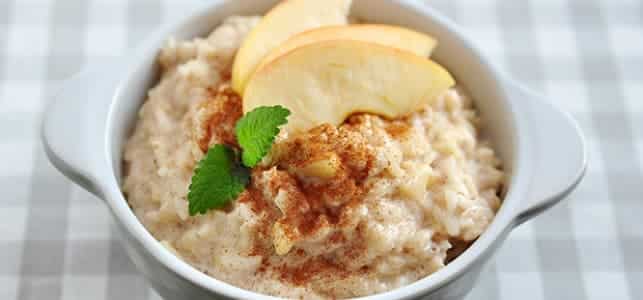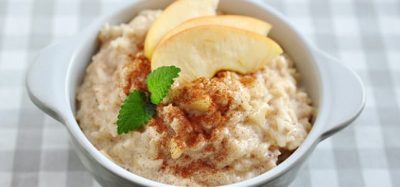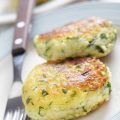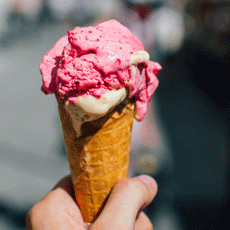
Written by Suzanne, Chief Health Officer and Resident Grandmother
These days, there is a cult-like enthusiasm for high-protein diets (hello, Paleo). Carbs are getting a bad rap, some of it well deserved. I meet many clients who limit their intake of grains in the name of health and weight control. I am all for limiting simple carbohydrates like refined sugar and heavily processed grains. Simple carbs cause unstable energy and add a lot of calories but few nutrients to our diets. However, I do think that there is a place in our diet for complex carbohydrates.
Are you looking for more energy but don’t want to rely on sweets or caffeine to fuel you? Try eating some whole grains, especially at breakfast (see the recipe at the end of this post for one of my favorites).
Humans and whole grains: we go way back
As humans ceased to be hunter-gatherers and settled down into farming communities, they were able to cultivate grain crops. Whole grains became a central element of the human diet. Quinoa, millet, sorghum, amaranth, teff, freekeh, chia seeds, farro, spelt and Kamut are all ancient grains. (The latter three are not gluten-free, but some people with gluten or wheat sensitivities can tolerate them.)
Across the world, grains were staples in the human diet. In the Americas, it was corn. In India and Asia, diets were built around rice. In Africa, people ate sorghum. In the Middle East, they used wheat to make pita bread, tabouli, and couscous. In Europe, corn, millet, wheat, rice, pasta, dark breads, and even beer were considered health-providing foods. In Scotland, oats were a staple food. In Russia, they ate buckwheat (kasha). People living in these communities—on all continents—had lean, strong bodies.
Whole grains are nutrition powerhouses
Whole grains are an excellent source of nutrition. They contain essential enzymes, iron, dietary fiber, protein, vitamin E, and B-complex vitamins. Some are good sources of omega-3 fatty acids. Because the body absorbs whole grains slowly, their complex carbohydrates provide sustained and high-quality energy.
Ancient grains for modern life
Obviously, our lifestyles have changed since our ancestors settled into farming communities. We move less, eat more, stress more, and sleep less. Most of us are not laboring to produce our own food and we don’t need to sit down to a huge “farmer’s breakfast.” But we do need energy and nutrients, and whole grains are a great source.
Each person can gauge the amount of whole grains they eat, with how they feel. When I was a young mother and very active all day, I could eat a lot of whole grains. Now as an older woman who leads a more sedentary day, I eat fewer whole grains. I go to the gym most mornings, and take a walk in the afternoon. But I’m no longer running around after children all day, which requires a special kind of energy.
One of my favorite ways to enjoy whole grains is at breakfast. I am always looking for new things to make for breakfast when my grandsons stay here. (If it were up to them, we would eat these sprouted spelt waffles every day.) Last week I tried something different, and they loved it. Tell the kids you’re making a “breakfast sundae,” and let them add the toppings!
 Apple & Rice Hot Cereal
Apple & Rice Hot Cereal
Modified from The Chopra Center Cookbook
Ingredients
This recipe is a guide; make it with whatever ingredients you have on hand. Enjoy for breakfast, snack, or even dessert!
- 2 1/2 cups milk of your choice (I love making my own almond milk)
- 1 cup brown basmati rice, or whole grain of your choice
- 1 stick cinnamon
- 3 whole cardamom pods
- 1/4 to 1/2 cup apple juice
- 3 large apples, unpeeled and cubed
- ¼ cup currants
- 1 tablespoon lemon juice
- 1 teaspoon cinnamon
- 1/2 teaspoon nutmeg
- 1 teaspoon vanilla extract
- 1 tablespoon maple syrup
- 1 tablespoon toasted coconut
- 1/4 cup roasted walnuts
Directions:
In a 2 quart saucepan, bring the milk and rice to a boil; add the cinnamon stick and the cardamom. Reduce heat, cover, and simmer for 15 to 20 minutes at the lowest possible heat. Remove from heat, fluff with a fork, and set aside.
Meanwhile, in a medium saucepan, bring the apple juice to a boil; add the apples, currants, lemon juice, cinnamon, and nutmeg. Simmer for 5 minutes, adding more juice if necessary. Remove from the heat and stir in the vanilla and maple syrup.
Place the rice in a serving bowl or individual bowls. Spoon the apple mixture over the rice and drizzle some of the juice on top. Garnish with toasted coconut and walnuts.
P.S. You’ll notice in this post that I’ve linked a variety of ingredients to Thrive Market. If you aren’t familiar with Thrive, I encourage you to give it a try. It’s a Costco meets Whole Foods meets Amazon model, with hard-to-find healthful foods delivered, for free, at steeply discounted prices.
If you liked this post, sign up for our newsletter to be alerted when we publish new content like this!










Share this:
Share the post "In Defense of Grains"